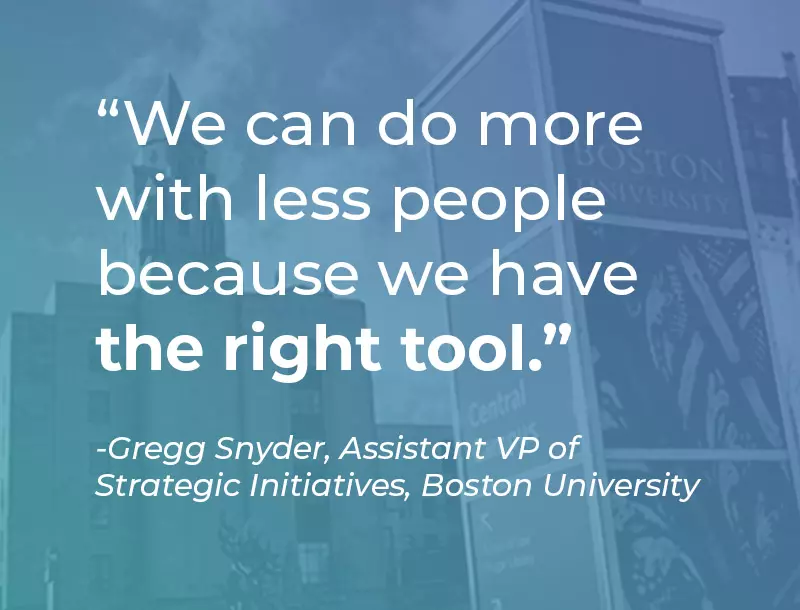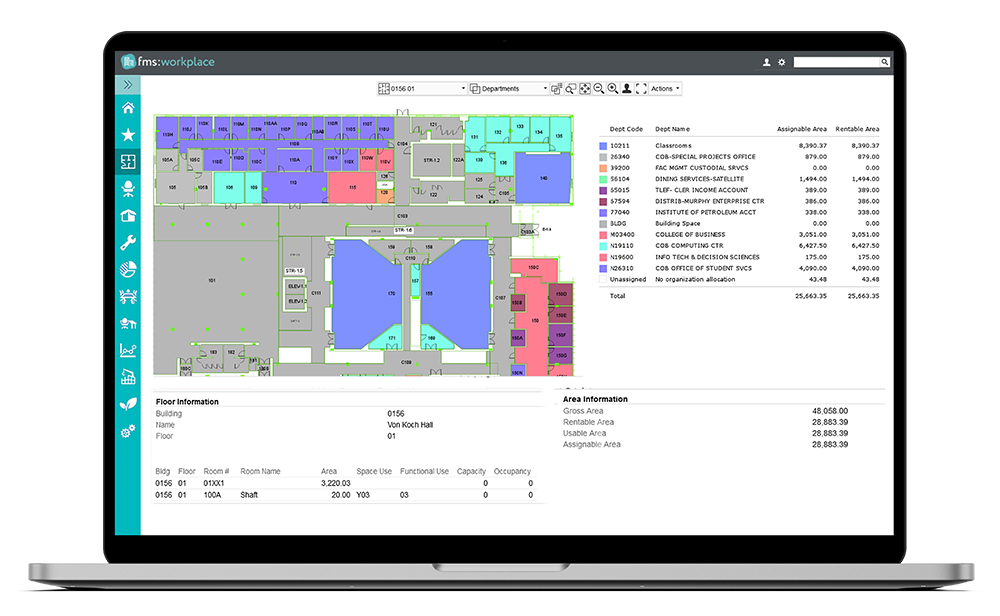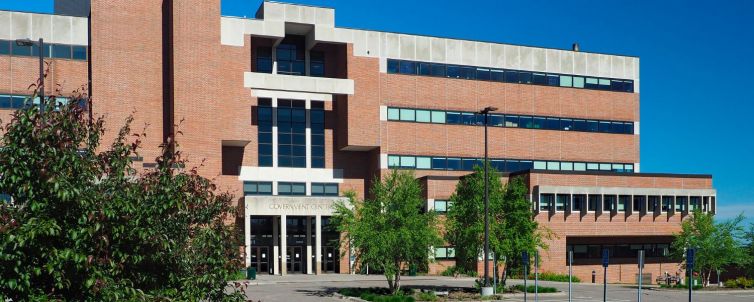The Customer
Boston University is no small operation. With over 34,000 undergraduate and graduate students from more than 130 countries, nearly 10,000 faculty and staff, 17 schools and colleges, and 300 fields of study, the University’s three campuses are always humming, and always in high gear.
The Challenge
Before Boston University implemented FM:Systems, the critical data needed to accurately and efficiently allocate, consolidate, manage and maintain their campus space lived in various shadow systems across the enterprise. Using long institutionalized systems like Excel, Aperture, CAD, PDFs, and SAP for Financials, data for strategic planning had to be cobbled together from disjointed sources, which was time consuming, inefficient, and often inconsistent.
This disjointed data acted as a true impediment to making strategic decisions across the University–decisions that have far reaching impacts on the allocation and use of staff, funds, physical spaces, and the University’s ability to stay competitive, maintaining its reputation as a leading global research institution.

Capturing that knowledge, distributing it seamlessly, and leveraging it to improve decision making could have significant implications for both internal and external stakeholders. Internally, it could facilitate the implementation of a strategic plan for business process improvement; and externally, it would allow for improved campus planning and development. Both are critical to continue driving costs down, reducing risk, and attracting top faculty talent and student populations in a highly competitive market– at a time when federal funding has been relatively level.
For the Facilities group, the challenge was to break down silos of data residing in disparate systems, managed by disparate groups, to encourage a single, shared information source that could provide accurate, comprehensive data. Data that could finally empower more strategic decision making by providing critical insight and analytics and positively impact all four core University resources: people, funding, space, and reputation.
The Solution
When Boston University started the process of searching for a new Integrated Workplace Management System (IWMS), they had a strong vision for what it needed to do. Because the decision would have wide-reaching implications for the entire University, key stakeholders were involved, forming a highly engaged and collaborative initiative. Participants included IT, Financial Operations, Office of the Budget, General Accounting, Housing, Provost of the Medical Campus, and the Registrar’s office–anyone who needed space, used space, assigned space, or was responsible for maintaining it, came together to ensure the initiative was successful.

Boston University uses these solutions:

Space Management

Higher Education Survey

Move Management
The Results
Today, Boston University uses FM:Systems across the enterprise, transforming space into a true strategic asset. Benefits of the system include:
Bringing People & Knowledge Together
FM:Systems helps the University classify what spaces might need to be disposed of and which spaces could be better utilized in order to support a collaborative, innovative approach to teaching, study, and University life. Floor plans can be shared with literally a click of a button, so everyone involved in planning and using spaces can access the same information, and leverage insights as to how space can be utilized for the greatest advantage for faculty, researchers, students, and the City of Boston.

Facilitating the accreditation process
FM:Systems helps the University keep track of vacant and/or less efficiently used space and provides the detail needed regarding the improvement to spaces to support the University’s accreditation process. Now there is one central depository of data rather than multiple, disparate systems–ensuring the accuracy and integrity of the data. Improving the allocation of resources Every square inch of the University has to be heated, cooled, cleaned and maintained. Now if there’s a space that’s inactive, the University can immediately identify the underused asset and start to reallocate resources, helping them better identify how they are allocating the resources for the University community, including staff, faculty and students.
Improving the allocation of resources
Every square inch of the University has to be heated, cooled, cleaned and maintained. Now if there’s a space that’s inactive, the University can immediately identify the underused asset and start to reallocate resources, helping them better identify how they are allocating the resources for the University community, including staff, faculty and students.

Supporting values of sustainability & energy efficiency
Boston University is a leading organization from a sustainability and climate action plan perspective. FM:Systems helps keep their top ranking, consistently seeking more efficiency wherever possible, and allows them to maximize what they have, rather than building new systems.
Staying Competitive
Boston University can keep track of their building related assets in a manner that allows all of their facility managers and leaders to share data and make sure they have the most safe, secure, attractive spaces for faculty, researchers, students and the City of Boston.
Boston University had 3 overarching goals:
The University understood that the common denominator in core business processes for Facility Management– project management, work order management, maintenance management, asset management, time management, and utilities management–was space. All of these core business processes needed the same information to start– so a new technology system for robust space management was the first priority, to help them easily inventory, capture, and distribute space data across the enterprise.
The sheer variety, size, and range of complexity of projects at the University requires excellent project management. At any given time, projects might range from a 10K cosmetic improvement in a classroom, to a $300M new building. The University needed a technology solution that could help take them beyond a view of static floor plans–to facilitate easier, more efficient delivery of projects. At the same time, the technology needed to provide a wide variety of analytics so stakeholders could be more informed about how they allocate capital resources.
Another goal was to reduce the need for reactive environments and be more prepared and ready for changes to aging infrastructure. With buildings dating back to mid 1800’s, the University needed to proactively manage and maintain properties, maximize existing resources, and avoid building or costly improvements when possible.
“When the entire operation works from the same base of information and knowledge, staff become more engaged in making sure the source of the information is accurate–reducing risk, saving money and improving campus-wide collaboration.”
-Gregg Snyder, Assistant VP of Strategic Initiatives, Boston University









